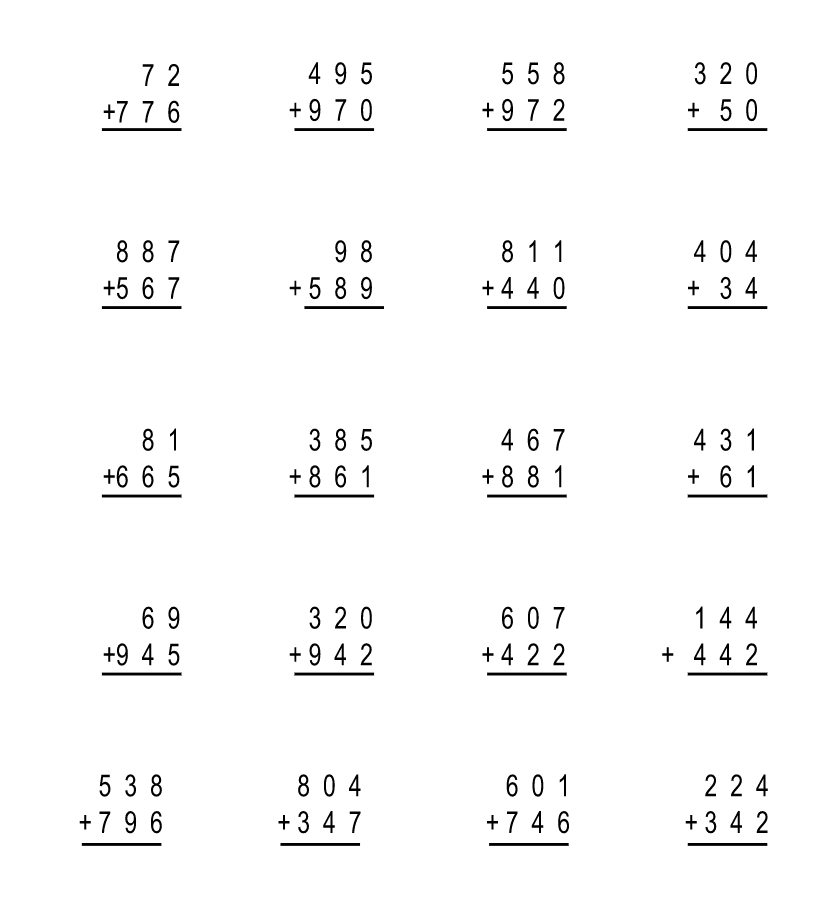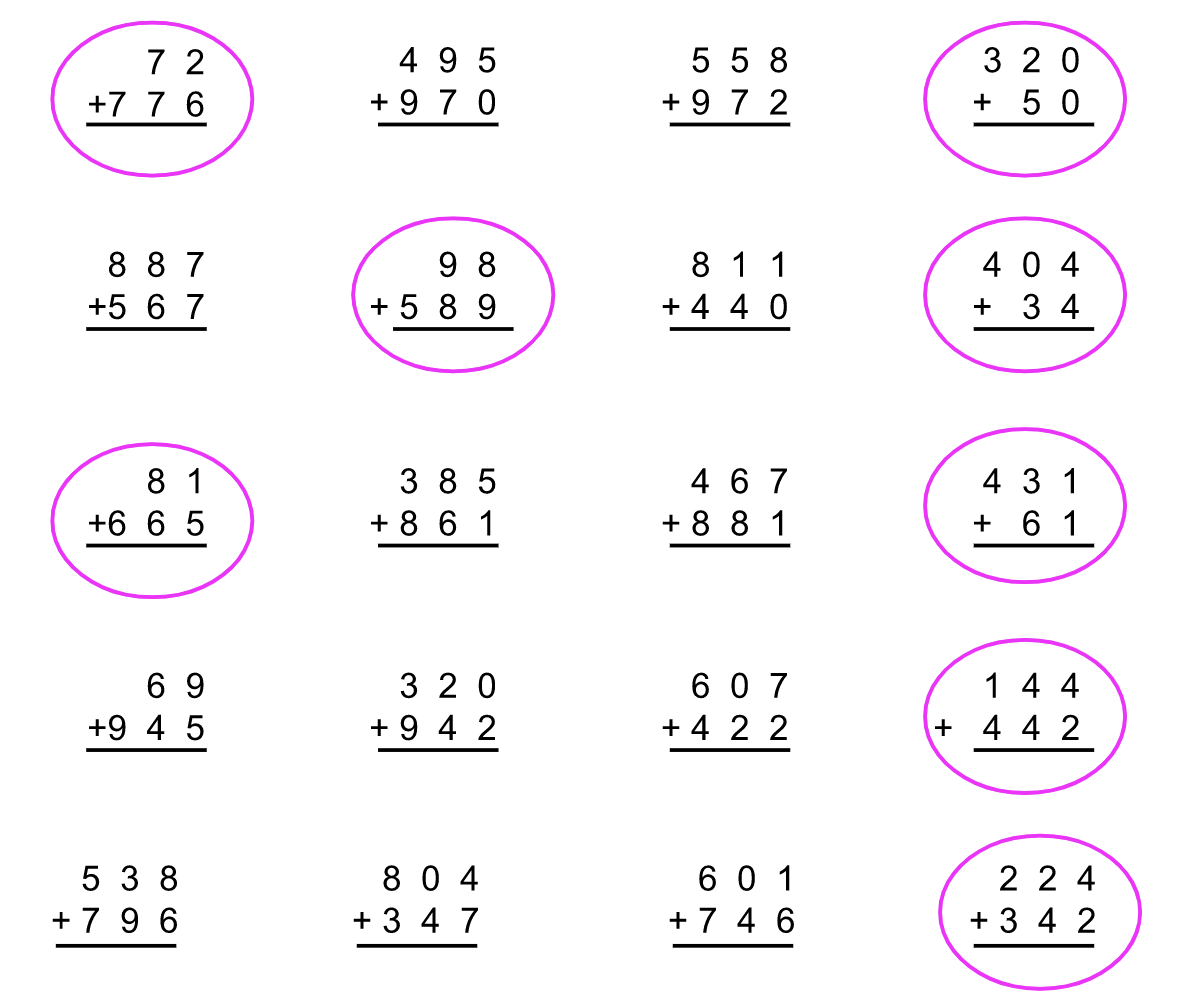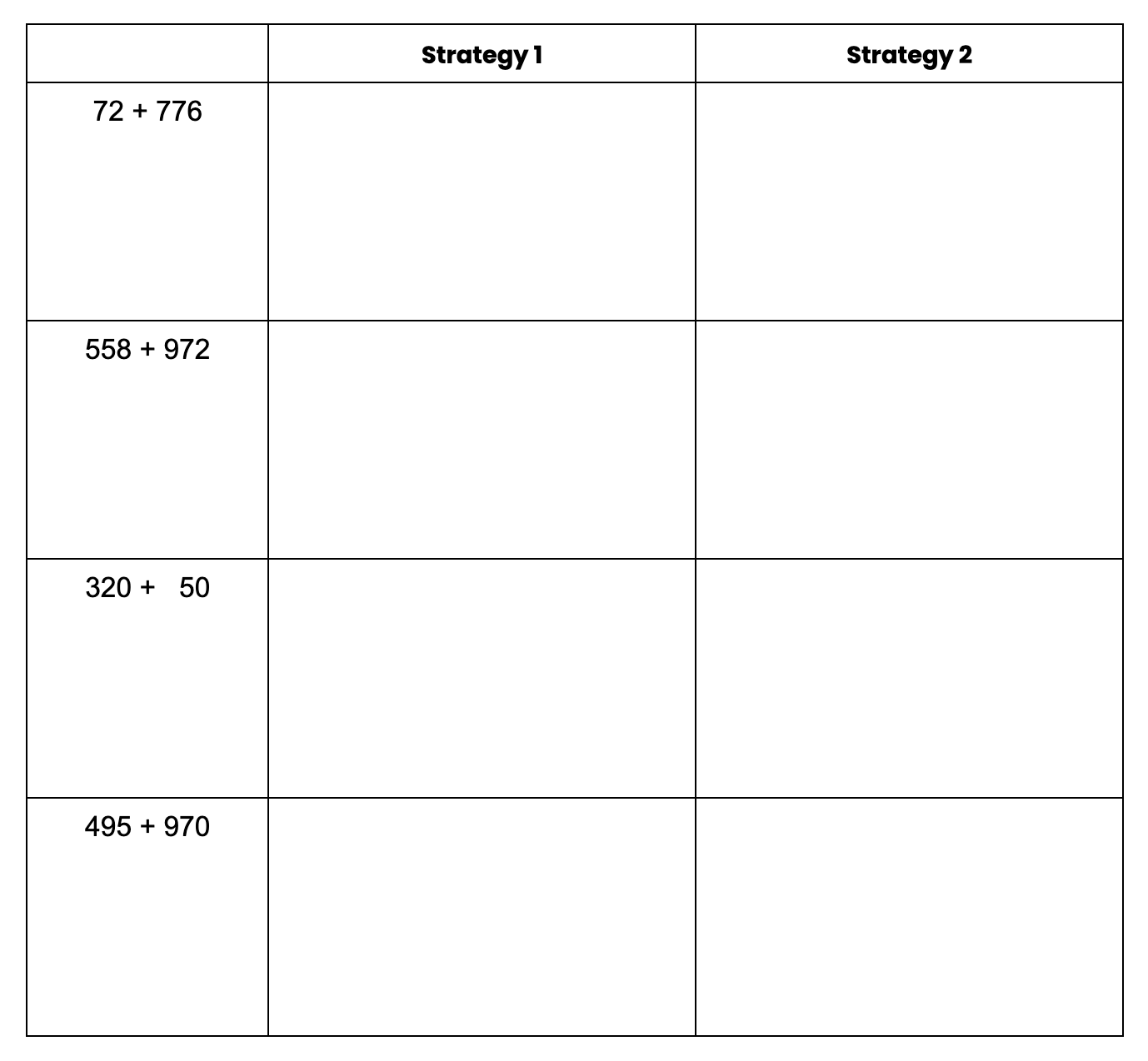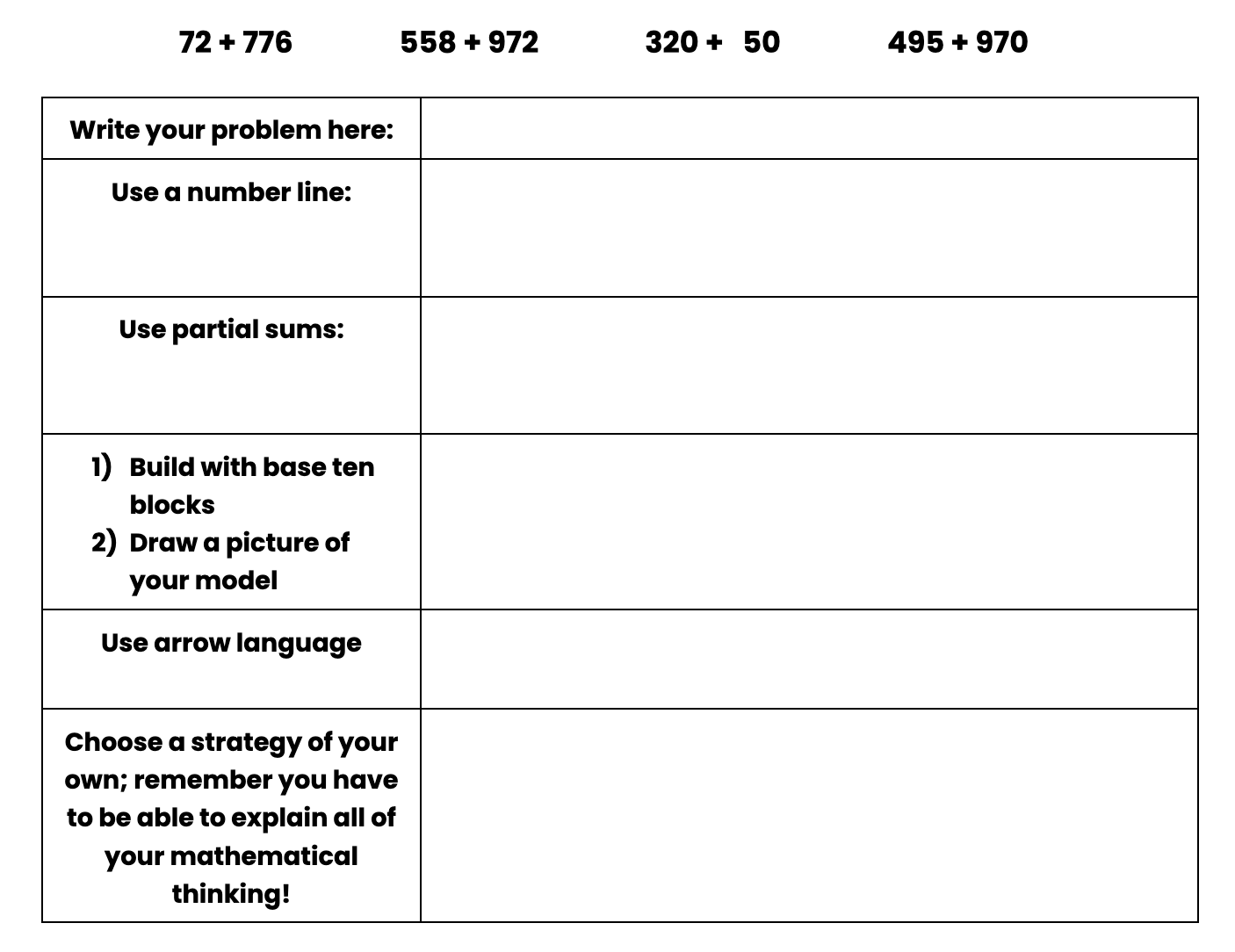One of the things that I love the most about math is how much bang you can get for your buck with simple problems. Doing math doesn’t always mean the problem itself needs to be super complex. It’s what you ask kids to DO with the problem that requires thinking. With that, when you are in a pinch and need something quick, you don’t need to rely on Googling something like “third grade math problems” to get a quick worksheet. YOU can put something together to keep your kids busy – even when you are making plans for a sub!
Let’s first look at what often happens when we Google for quick easy problems. If you were to google something like “third grade math problems,” you might get something like the following:

Upon first glance, it seems simple enough and like something that will keep kids busy. However, while the goal might be to have something that keeps them occupied, there are many things to take into consideration.
1. Even though you Googled “third grade math problems,” are they actually on grade level?
The last thing you want is for something to be way too easy or way too hard. If you want to rely on the internet for your resources, you’ll need to learn how to vet them appropriately. First question to ask is, “Is this actually on grade level?” In Indiana, these are two standards you’d want to think about for a worksheet like the above:
| 3.C.1 | Fluently add and subtract whole numbers within 1000 using strategies and algorithms based on place value, properties of operations, and relationships between addition and subtraction. |
| 3.AT.1 | Solve real-world problems involving addition and subtraction of whole numbers within 1000 (e.g., by using drawings and equations with a symbol for the unknown number to represent the problem). |
The first thing to do is to check and see – which of these problems are actually on grade level? We are looking for whether or not there are problems where the sum or difference will be within 1,000 and if they are given space to use the various algorithms. Right away, we can see there is very little space to work. That’s something that needs to be fixed! We also need to see which problems are actually on grade level:

Of the 20 problems listed, only 8 are actually within the Indiana grade level standards. The rest are above standard. Some kids might be ready for those problems. However, this is a worksheet meant for the entire class; therefore, it needs to be on grade level and provide other opportunities for differentiation. The last thing we want in math is for kids to be frustrated, lost, and confused. The “third grade” worksheet is above grade level, and its actual design limits students’ abilities to think as they work through the math.
2. If you want to provide opportunities for differentiation, do so!
Here’s one way:
Choose two problems below that you would consider to be your “just right” problems. A “just right” problem is one that challenges your thinking. It’s a problem that when you solve it the first time, you want to do one or two more strategies to make sure your mathematical thinking is correct.
After you choose your two problems, use at least two strategies to solve each one.

When choosing four of the 20 problems with different skill levels and providing an opportunity for students to choose their “just right” problems, you are giving everyone a chance to challenge themselves. And guess what? If they do 2 of them quickly, there are two more problems they can do the same!
3. Make sure they have designated space to work AND write the problems horizontally, so students are free to use the strategy or algorithms that work best for them!
Check out our Big Ideas and Progressions documents that explain more about the benefits of writing problems horizontally. In the example below, I provide one way to do this. The goal is to get as much work space as possible for students. You can also use both sides of the paper. Don’t be shy.
Choose two problems below that you would consider to be your “just right” problems. A “just right” problem is one that challenges your thinking. It’s a problem that when you solve it the first time, you want to do one or two more strategies to make sure your mathematical thinking is correct.
After you choose your two problems, use at least two strategies to solve each one.

4. There are opportunities to make students work even harder!
Remember, the third grade goal is to fluently add and subtract within 1,000. Use Keep Indiana Learning’s Big Ideas documents to help you understand exactly what this means. In sum, if a student is fluent in adding within 1,000, they can solve a problem by thinking flexibly and using a variety of strategies, accurately explain all of their mathematical thinking through both written and oral language, and determine which strategy will be the most efficient way to solve. Bonus – if they are choosing ONE “just right” problem and finish, they can do the same for 3 more problems.
Here’s what this may look like on a math worksheet:
Choose one problem from those listed below that you would consider to be your “just right” problem. A “just right” problem is one that challenges your thinking. It’s a problem that when you solve it the first time, you want to do one or two more strategies to make sure your mathematical thinking is correct.
After you choose your problem, write it in the box and solve using the strategies listed. If there’s one that you don’t feel comfortable using, skip it and use your own!

5. Finally, the only thing missing is an opportunity for kids to discuss and critique each other’s work.
Here’s one more modification to the directions that could be made:
Choose one problem from those listed below that you would consider to be your “just right” problem. A “just right” problem is one that challenges your thinking. It’s a problem that when you solve it the first time, you want to do one or two more strategies to make sure your mathematical thinking is correct.
After you choose your problem, write it in the box and solve using the strategies listed.
When you’re finished, find a classmate who chose the same problem. How are your strategies the same? How are they different? Whose is the most efficient? Why? If you think one of your strategies could be more efficient, redo it using a different color pencil or pen!
After you have critiqued each other’s work, choose a new problem and work together to efficiently solve using each strategy.
When choosing four of the 20 problems with different skill levels and providing an opportunity for students to choose their ‘just right’ problems, you are giving everyone a chance to challenge themselves.
What started off as a “Googled” worksheet has turned into something where students are going to build off their own mathematical understandings to solve problems in ways that make sense to them. They have space to share all of their mathematical thinking and an opportunity to engage with their classmates and critique the reasoning of others. These two concepts together will hold them accountable to actually doing the work.
The beautiful thing about creating templates like or similar to the one above is once you have the template, all you have to do is plug in the numbers, change the strategies you want them to try, or maybe change how they’ll engage with each other. These are simple moves that increase the complexity of the work and the thinking kids will do. Don’t limit your students- or your teaching – to the “Googled” worksheet! They’ll learn more from doing this kind of work, and you’ll learn more about how they think about math!
Resources
Please login or register to claim PGPs.
Alternatively, you may use the PGP Request Form if you prefer to not register an account.



